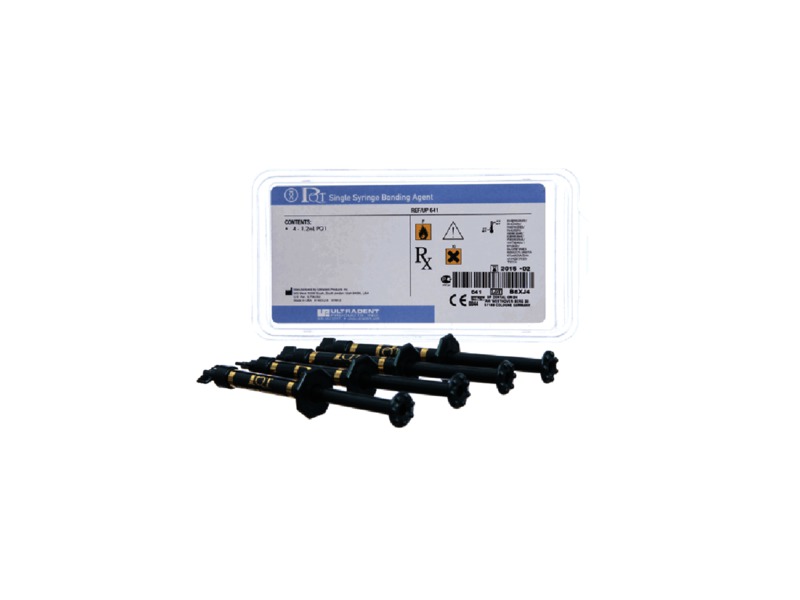PQ1
Special Offer
Product Details
Contents:
4 x1.2ml PQ1 Syringes
PQ1 can be used for almost all bonding needs in restorative dentistry
PQ1 is a syringe-delivered, single-component, light-cured resin that uses ethyl alcohol as a solvent. It is 40% filled and radiopaque.
PQ1 bonds to dentine and enamel using composite, amalgam, porcelain, metal and composite repairs.
Delivered via syringe, PQ1 is easy to place directly where you need it using the Inspiral Bruch Tips or Blue Micro Tips.
View the full range of Ultradent Products
To read more and find helpful tips visit Ultradent Blogs
– High bond strength helps prevent microleakage
– Radiopaque
– Easy to use
– Places directly
– Cures with all lights
Hints & Tips
-
Can I use PQ1 with all curing lights?
PQ1 cures with all lights, however, we do not recommend use with argon lasers. -
What kind of filler is found in PQ1?
The fillers are silica dioxide and FluorUtite. -
What is the film thickness of PQ1?
PQ1 can be thinned to 2µm. -
What type of monomer does PQ1 contain?
PQ1 is BisGMA based but also contains other methacrylate-based hydrophilic monomers. -
How does a highly-filled bonding resin create a higher bond strength?
Fillers in bonding agents facilitate stronger bonds because their presence reduces polymerisation shrinkage, has a lower coefficient of expansion, and reduction in water absorption of the bonding resin. When resins cure, they shrink and the fillers provide a basic structure to counteract that shrinkage. When two different materials such as a resin and a tooth are exposed to temperature changes, they expand and contract at different rates. The fillers placed in resins typically have a coefficient of expansion that is similar to that of a tooth; therefore, the tooth and the resin expand and contract more closely to the same amount, placing less force on the tooth resin interface. Unfilled resins absorb water which cause them to distort through a process called hydrolysis. The addition of fillers reduces the amount or degree of water absorption. This places less detrimental force on the tooth bonding resin interface. The addition of fillers reduces the loss of bonding resin at the margin, and increases the strength of resins. All of these improved physical properties make the use of a filled bonding resin preferable over an unfilled bonding resin. -
Are there any instances where the etch step may be skipped with PQ1?
The only instances where the etch step can be skipped is on deciduous teeth, deep subgingival class V, or deep subgingival class II preparations. In these cases, etching may initiate bleeding. Acid etch is not just important for roughening the bonding surface; it is also important for cleaning this surface. If you skips the etch step, you should apply some Consepsis prior to placing the restoration. For the best bonds, however, you should still etch.


